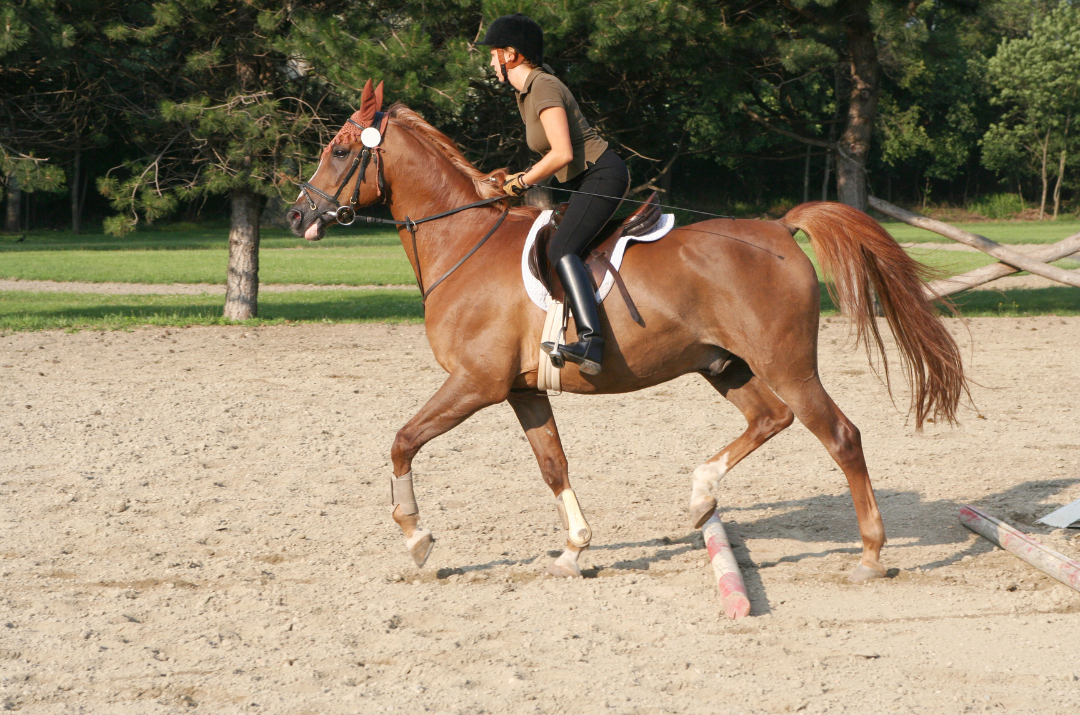
How to Create and Optimize Your Horse’s Training Routine
1. Determine the Right Amount of Exercise
• Age and Fitness Level: Younger, more active horses will need more exercise, while older horses or those with specific health issues might require lighter activities.
• Workload Based on Activity: The type of work you do with your horse (trail riding, dressage, jumping, etc.) will dictate the intensity and frequency of exercise.
• Light Work: Walk/trot for about 30 minutes 3-4 times a week.
• Moderate Work: Walk/trot/canter or more demanding training 4-5 days a week.
• Heavy Work: Intensive exercise such as jumping, advanced dressage, or endurance riding 5-6 days a week, with rest days in between.
2. Vary the Routine
• Change Gaits and Activities: Mix up your training between walking, trotting, cantering, and, if applicable, galloping. You can also include hill work, which helps strengthen muscles.
• Include Lateral Work: Exercises like leg-yielding, shoulder-in, or sidepassing are great for building balance, flexibility, and strength.
• Trail Riding or Hacking Out: In addition to arena work, trail riding can provide mental stimulation and different terrain that strengthens the horse’s muscles in a more varied way.
3. Warm-Up and Cool-Down
• Warm-Up: Start with a 10-15 minute walk to loosen up your horse’s muscles and get the blood flowing. Gradually increase intensity with some trotting before moving on to more strenuous activities.
• Cool-Down: After more intense work, allow your horse to walk for 10-15 minutes to gradually lower their heart rate and prevent stiffness.
4. Work on Endurance
• Endurance training can involve building up your horse’s stamina over time. This might include long, steady rides at a trot or canter over a set distance, gradually increasing as your horse’s fitness improves.
• Interval Training: For a mix of speed and endurance, alternate between periods of faster gaits (like cantering) and slower gaits (like walking). This helps build cardiovascular strength and recovery.
5. Strength Training
• Hill Work: Riding or lunging on an incline helps develop strong, powerful hindquarters and improves overall fitness.
• Lunging: Lunging in circles at varying speeds can help build strength and flexibility. You can also use poles or cavaletti to improve balance and coordination.
• Jumping or Ground Poles: If your horse is used to jumping, this is a great way to increase muscle strength and flexibility, but be sure to balance this with rest and recovery.
6. Mental Stimulation
• Change the Scenery: If possible, take your horse on different routes and new terrain. It keeps things interesting and reduces boredom.
• Learning New Skills: Introduce your horse to new challenges, like working through obstacles, learning to bend or perform new movements in dressage, or even liberty work.
• Social Interaction: Some horses enjoy being ridden with others. Pairing up with another horse can help make exercise feel more like fun than work.
7. Rest and Recovery
• Horses, like humans, need time to recover from intense exercise. Ensure your horse has rest days to avoid overtraining and muscle fatigue.
• Watch for Fatigue: Signs of overexertion include excessive sweating, a rapid heart rate, lack of appetite, or lameness. If you notice any of these, give your horse extra time to rest.
8. Track Progress
• Keep track of your horse’s progress over time. If you’re doing endurance work, you can track the distance or time spent on each ride. With jumping or dressage, note any improvements in technique, balance, or strength.
9. Tailor Exercise to the Horse’s Needs
• Young Horses: They don’t need strenuous work early on. Focus on basic groundwork, gentle trotting, and walking to build a foundation. Keep sessions short and fun.
• Older Horses: They may require more warm-up time and less intense workouts. Focus on maintaining flexibility and strength, not pushing for performance.
• Working Horses (Sport, Endurance, etc.): These horses need more specific training routines depending on the discipline. Work with a trainer or vet to design an optimal program.
Example Exercise Routine:
For a moderately fit horse:
• Monday: Light hack or walk/trot for 30-45 minutes
• Tuesday: Schooling session (dressage or jumping) for 45 minutes
• Wednesday: Rest or light groundwork
• Thursday: Interval training (alternate between trot and canter) for 30-40 minutes
• Friday: Hill work or lunging
• Saturday: Longer trail ride or endurance ride (1-2 hours)
• Sunday: Rest or light stretching
Consistency is key, so establishing a balanced routine that incorporates both mental and physical exercises will keep your horse healthy and happy.
